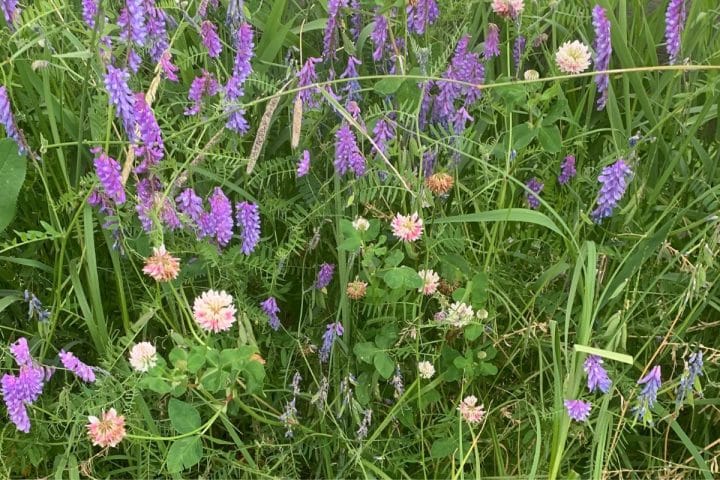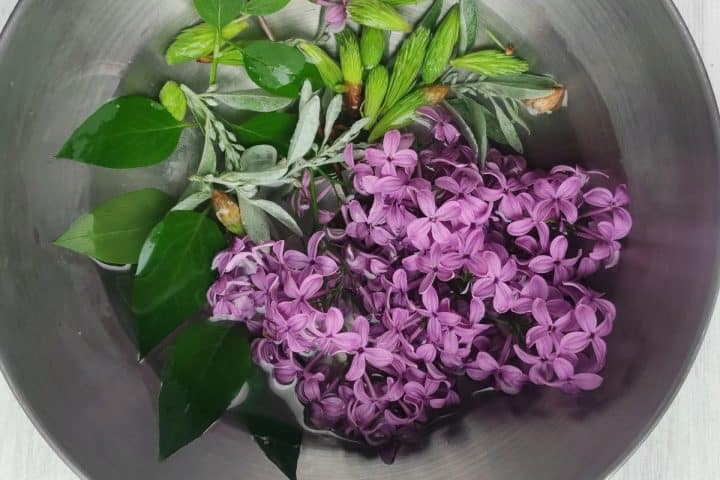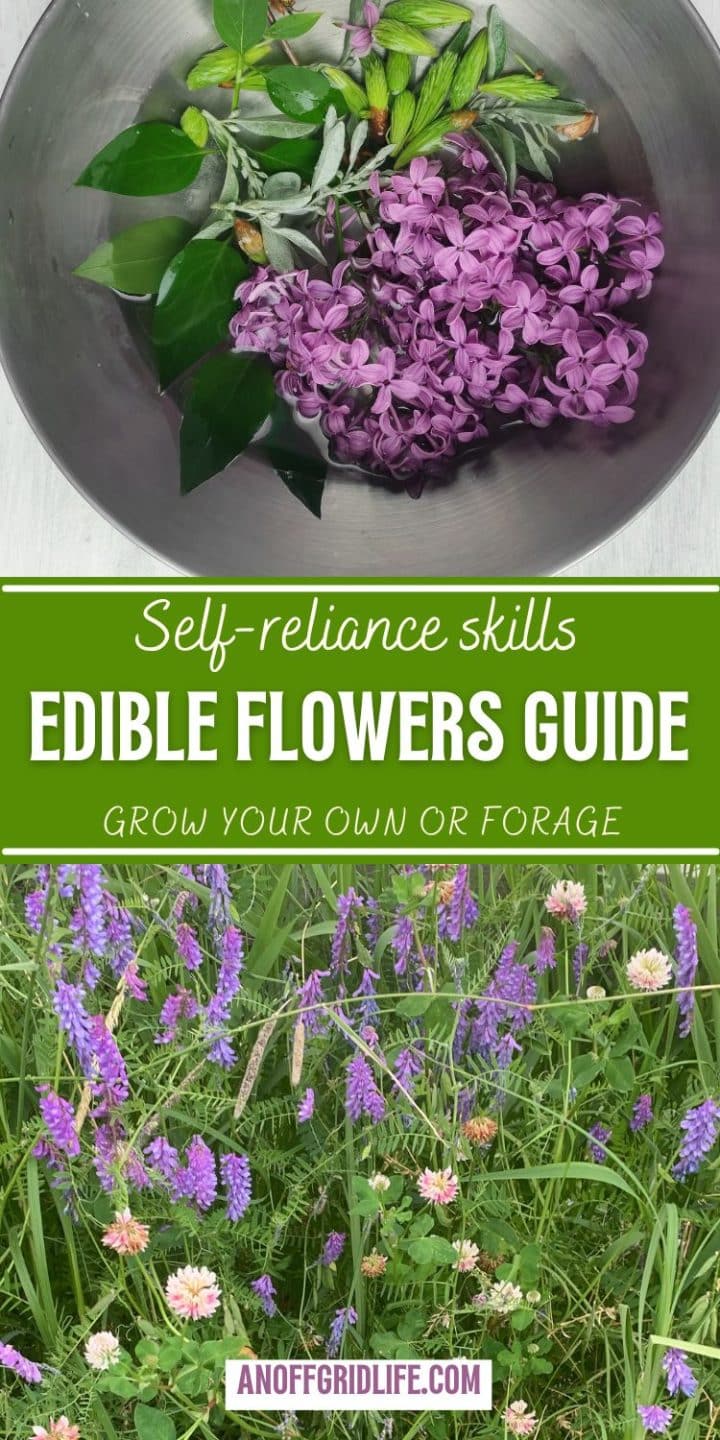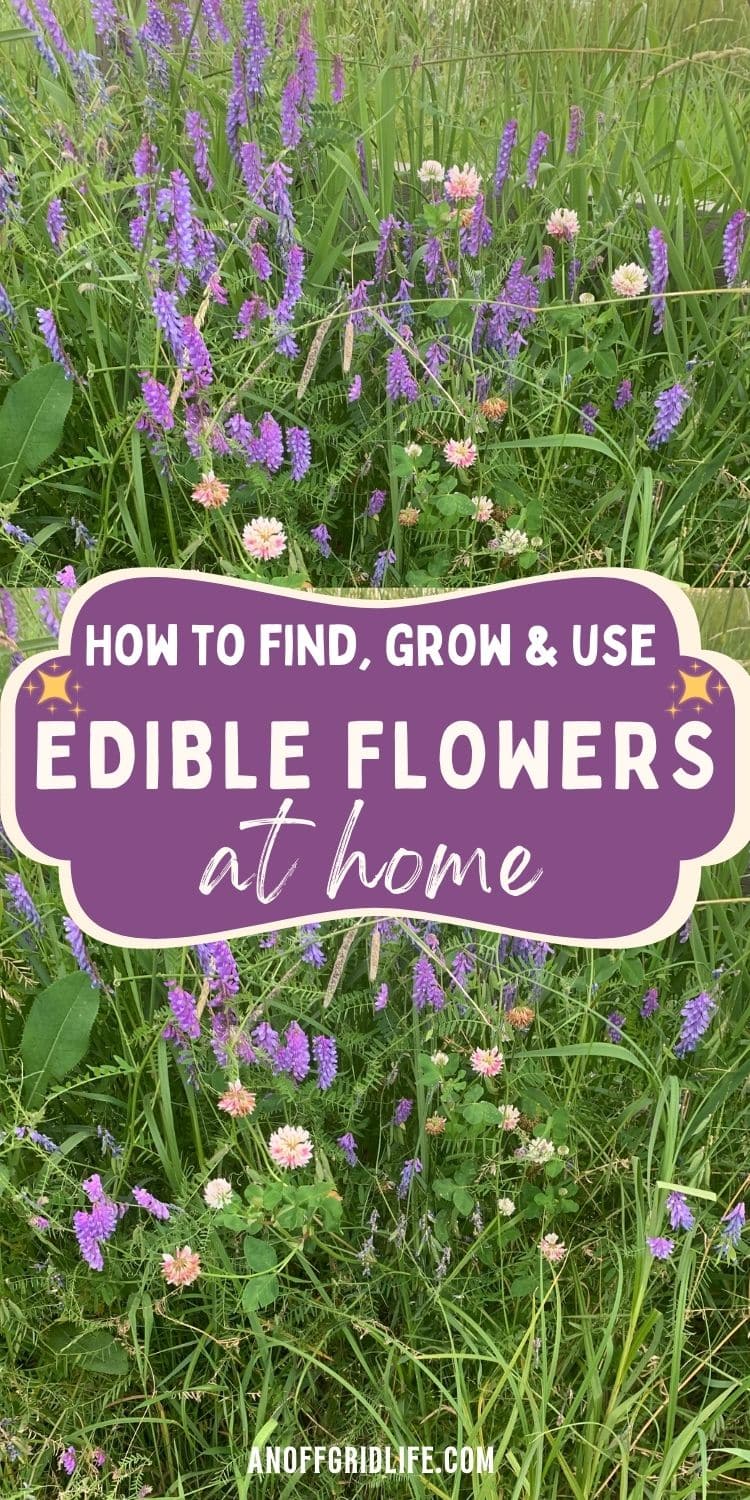If you're looking for a simple way to add flavor, color, and nutrition to your off-grid meals, look no further than your garden. Edible flowers can bring a surprising depth to recipes — from teas and desserts to salads and oils. And when you grow them yourself, you know exactly how they were raised. No pesticides, no herbicides, just the good stuff.

Here's a closer look at some of the best edible flowers to grow, how to care for them, and easy ways to use them in your off-grid kitchen.
Jump to:
Which Flowers Are Edible?
First things first, not all flowers are edible, and some can be downright toxic. So double-check you're using the right kind before sprinkling petals on a salad or stirring them into batter. Here are some favorite edible flowers.
Favorite Edible Flowers
Calendula: Known for its bright orange and yellow blooms, calendula petals add a subtle spice to soups and salads. They also make a lovely, earthy tea and are often infused into oils for both culinary and homestead bath products.
Rose: The scent alone is enough to tempt most gardeners into growing roses, but the petals—especially from heirloom or wild varieties—can also be used in syrups, jams, jellies, and desserts. Fresh or candied, edible roses look beautiful on everything from cakes to cocktails.
Lavender: If you've tried our Vanilla Lavender Latte recipe, you already know how versatile lavender buds can be. Use them to make your own lavender lemonade, or try them in lemonade or baked goods.
Violet: These dainty purple blossoms add a pop of color and a floral note to salads, syrups, and sweets. You can even candy them for a decorative touch.
Dandelion: Often dismissed as a weed, dandelions are packed with nutrients and a unique flavor. From dandelion cookies to wine and fritters, there's a lot you can do with this sunny backyard bloom.
Nasturtium: These are a must in any edible flower garden. Their vibrant flowers have a peppery kick that works well in salads, wraps, and open-faced sandwiches.
Pansy: Mildly sweet and almost too pretty to eat, pansies are perfect for garnishing desserts or floating in drinks.
Borage: With its delicate blue star-shaped flowers and cucumber flavor, it is a fun addition to salads and summer cocktails.
Elderflower: The small white blossoms of the elderflower are often turned into syrups and cordials, especially in European cuisine. They add a light floral sweetness that pairs well with citrus.
Chive Blossoms: If you're growing chives for their greens, don't toss the flowers. Their subtle onion flavor makes them ideal for flavoring vinegar or sprinkling over roasted vegetables.
Hibiscus: Known for its tart, cranberry-like taste and deep red color, hibiscus is a standout in iced teas, jellies, and syrup-based drinks.
Squash Blossoms: A summertime favorite, squash blossoms are often stuffed with cheese and lightly fried for a savory snack.
Don't Forget Clover
And then there's clover. As Michelle Price from Honest and Truly shared, clover was the first edible flower she tried during an outdoor education trip.
"When I was in middle school, we went on a whole-grade outdoor education adventure. I'll never forget the clovers we ate there and the education we got around them. We picked fresh clover in an area free of pesticides and other health concerns then dipped the flowered tips into a pancake batter and pan-fried them quickly. They were surprisingly tasty and so much fun. It's one of my favorite springtime activities even today."
— Michelle Price, Honest and TrulyRed clover is a pretty option to add to my own spring chocolate bark. This is a seasonal favorite using foraged or homegrown additions.
Foraging for Wild Edible Flowers

Whether you're living off the grid or simply spending more time outdoors, learning to forage for wild edible flowers is a natural next step. With some knowledge and care, foraging lets you make use of nature's bounty.
Foraging for edible flowers helps you learn to become more self-reliant and deepen your connection to the land. And you might be surprised at just how many edible blooms are growing right in your backyard or along your favorite walking trail.
Eat Your Dandelions
Dandelions are often the first to bloom in early spring and are one of the easiest flowers to identify and harvest. Like other edible garden weeds, the whole plant is edible from root to petal, but the sunny yellow flower is especially useful in recipes like dandelion cookies and fritters. Violets and red clover are also common flowers that are safe for people to eat, and they offer mild, sweet flavors that are perfect for salads and syrups.
When foraging, safety comes first. Never harvest flowers from areas sprayed with herbicides or near roadsides where pollutants may linger. Make sure you're 100% certain of the plant's identity—many flowers have toxic look-alikes. A good field guide or a local foraging workshop can help build your confidence.
Pick early in the day after the dew has dried but before the sun causes petals to wilt. Choose young, fresh blooms, and always harvest responsibly—never take more than a third from any one plant or patch. And, of course, give them a good rinse once you get home.
Foraging can become a seasonal rhythm and is a great way to supplement your edible flower garden. Plus, the satisfaction of turning wild-growing blooms into beautiful teas, desserts, or garnishes makes the effort well worth it.
A Few Safety Tips

Don't assume a flower is safe to eat just because it looks good. Flowers bought from a florist or garden center are often treated with chemicals. The same goes for wildflowers growing near roadsides or in industrial areas.
For safety, grow your own using organic practices or buy from a trusted source that specifically sells food-safe blooms. Always rinse flowers in cold water before using them to remove dirt or any insects hiding in the petals.
Learn more about edible flowers by reviewing a trusted edible flowers source or guide. While we found some great ones online, I prefer to have a paper copy just in case the world goes nuts and we don't have internet access at some point. Here are three good ones.
- Petersen Guides Edible Wild Plants for East/Central North America
- The Edible Flower Garden
- From Garden to Kitchen: Choosing, Growing & Cooking Edible Flowers
Growing Edible Flowers at Home
You don't need a giant homestead garden to grow edible flowers. Many of them thrive in containers, pots, or even vertical gardens.
Sunlight and Soil: Most edible flowers need full sun—at least six hours per day—and well-draining soil. Choose a sunny spot in your garden or set pots on a windowsill or patio.
Soil Health: Start with nutrient-rich, organic soil. Since you'll eat the flowers, skip the synthetic fertilizers and pesticides.
Watering: Like your other plants, edible flowers need consistent watering, especially during the hot summer months. Keep the soil moist but not waterlogged.
You can also companion plant edible flowers among your veggies. Nasturtiums help deter pests, and marigolds (also edible, though a bit bitter) are known for their soil-cleansing properties.
Planting an Edible Flower Garden
If you want regular access to edible blooms without relying on foraging or trips to a specialty store, planting an edible flower garden is the way to go. It doesn't require a huge space — just a few square feet in a sunny patch of your yard, or even several deep pots on a deck or balcony. You could even plant them throughout your backyard vegetable garden.
Flowers for Your Climate
Start by choosing flowers that thrive in your climate. Lavender, calendula, nasturtiums, and borage grow well in many regions and are great beginner plants and great options for pollinator gardens.
These varieties are edible flowers, and they're beneficial for attracting pollinators and improving overall garden health. And many double as companion plants to vegetables—nasturtiums, for example, repel aphids and whiteflies.
To get started, prepare your soil by enriching it with compost or well-rotted manure. Skip the chemical fertilizers and herbicides and make natural fertilizer or plant food. Organic practices keep your flowers safe to eat and support long-term soil health.
Direct sow seeds after the last frost date, or start seedlings indoors if you have a short growing season. Make sure your plants get at least six hours of sunlight per day and are watered consistently, especially during the hot summer months.
If you're working with limited space, try vertical gardening or interplant edible flowers among your herbs and vegetables. You can even mix them into your landscaping. Many of these blooms are as attractive as they are useful.
Label Edible Garden Flowers
Don't forget to label your plants, especially if you're growing look-alike varieties. It helps to keep track, especially when harvesting for food. With just a bit of planning and care, your edible flower garden can become a reliable source of color, fragrance, and flavor for your homestead kitchen—whether you're decorating a cake or brewing a soothing cup of vanilla lavender latte.
How to Use Edible Flowers
Once your garden's blooming, you'll have plenty of ways to use these flowers in everyday cooking and special treats.
Salads: Toss in pansies, violets, or nasturtiums for a colorful and flavorful boost. Their bright hues make even a simple bowl of greens feel fancy.
Garnishes: A few rose petals or borage blossoms on top of cakes, like this vintage strawberry sheet cake, tarts, or drinks can add a rustic elegance. You could even add them to a pretty springtime pizza!
Teas and Infusions: Lavender, hibiscus, and calendula make calming, fragrant teas. Just steep a tablespoon of petals in hot water for a few minutes, strain, and enjoy. And don't forget the easy, old-fashioned dandelion tea.
Oils and Vinegars: Place fresh, clean flowers in jars with your favorite oil or vinegar, let them sit for a few days, then strain. Use them in dressings or for cooking.
Candying: Want to preserve your harvest? Dip clean, dry petals in egg whites, sprinkle with sugar, and let dry completely. They'll store in a cool place for several weeks and make lovely decorations for cookies and cakes.
Stuffed Blossoms: If you're growing zucchini or other squashes, try picking a few blossoms before they fruit. Fill with seasoned ricotta or goat cheese, dip in a light batter, and fry until crisp. Serve warm for a savory treat that feels like a splurge.
The Joy of Growing and Eating Flowers
Adding edible flowers to your homestead meals isn't just another artisan food trend. It's actually an old-fashioned, practical way to use every bit of what you grow.
Whether you're drying lavender for tea, candying violets for desserts, or mixing chive blossoms into vinegar, these blooms offer a sensory reminder of the season.
And when your garden is bursting, there's something deeply satisfying about harvesting flowers not just for their looks but for their flavor and nutrition, too.
Planting, picking and eating flowers with your kids is also a fun outdoor family activity. Let them help plant and pick, but keep a close eye on them so they don't eat any non-edible flowers!
Encourage them to decorate a cake with petals or add pansies to a salad. Picking edible flowers is a hands-on, screen-free way to get children involved in gardening and home cooking. Plus, it gets them curious about what's edible—and what's not—in your backyard.
Whether you're experimenting with spring recipes or looking for new ways to make the most of your herbal harvest, consider adding edible flowers as a lovely and useful addition to your homestead kitchen.




